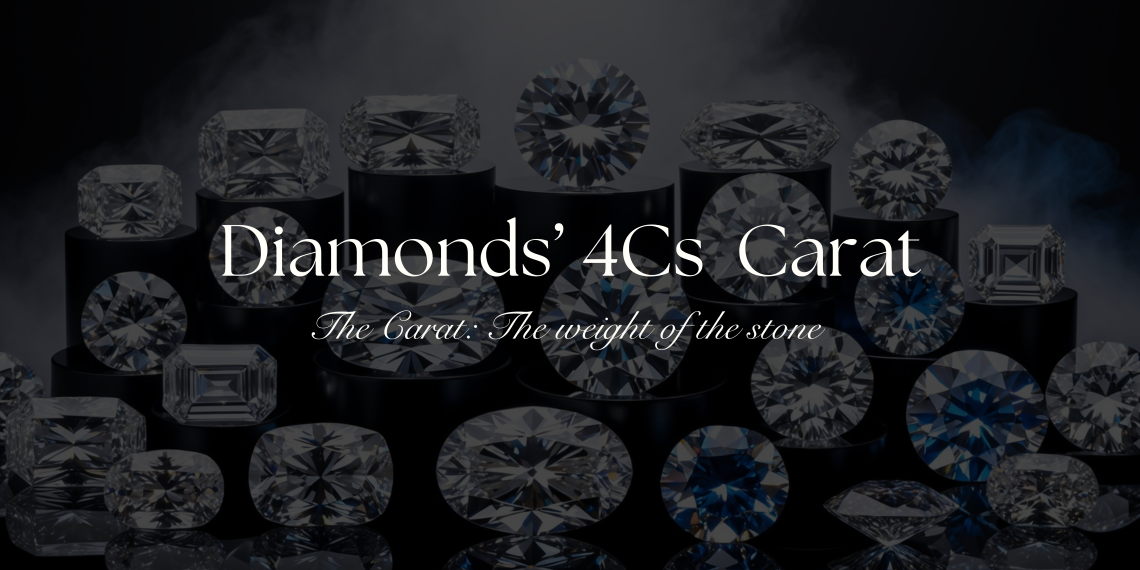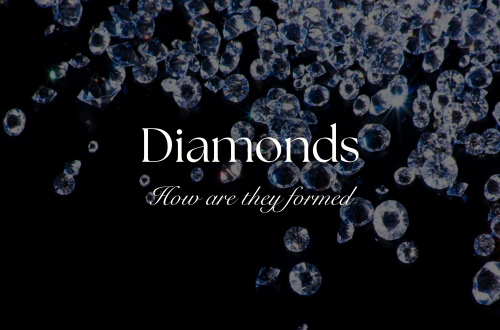The 4Cs of Diamonds: Understanding Carat
When it comes to diamonds, the 4Cs—Cut, Clarity, Carat, and Color—serve as the universal standard for evaluating these precious stones. Among these, Carat weight is perhaps the most well-known and easily understood characteristic, often associated with the diamond’s size. In this blog post, we will explore the intricacies of diamond carat weight, its impact on value, and what you should consider when choosing a diamond based on its carat weight.
Introduction to Diamond Carat
The term “carat” refers to the weight of a diamond, not its size, although the two are often correlated. One carat is equivalent to 200 milligrams, or 0.2 grams. The term originates from the carob seed, which was historically used as a reference for weighing precious stones due to its uniform weight. Today, carat weight is measured precisely to the hundredth decimal place, ensuring accuracy in diamond valuation.
Carat Weight and Size
While carat weight indicates the diamond’s weight, it doesn’t necessarily determine its dimensions. Two diamonds of the same carat weight can appear different in size depending on their cut and shape. For example, a well-cut diamond may appear larger than one that is cut more deeply, even if they weigh the same. This is because the spread of the diamond—how its weight is distributed—affects its overall appearance.
Here are a few factors that influence how carat weight translates to size:
- Cut Quality: A well-cut diamond reflects light more efficiently and appears larger. Poorly cut diamonds may hide their carat weight in their depth, making them look smaller.
- Shape: Different diamond shapes distribute weight differently. Round brilliant cuts, for instance, tend to appear smaller per carat compared to shapes like oval or pear cuts, which have more surface area.
- Setting Style: The setting can enhance the appearance of a diamond’s size. For example, bezel settings can make diamonds appear larger by extending the metal around the stone, while halo settings surround the center stone with smaller diamonds, enhancing the overall size perception.
How Carat Weight Affects Value
Carat weight significantly impacts the value of a diamond. Generally, the higher the carat weight, the more valuable the diamond. However, the price of a diamond doesn’t increase linearly with its carat weight. Instead, it rises exponentially because larger diamonds are rarer and more sought after.
Diamonds are priced per carat, and the per-carat price increases at specific weight thresholds, known as “magic sizes.” These thresholds are at 0.50 carats, 1.00 carat, 1.50 carats, 2.00 carats, and so on. For instance, a 1-carat diamond is not simply twice the price of a 0.50-carat diamond; it could be significantly more due to its rarity and desirability.
Choosing the Right Carat Weight
When selecting a diamond, carat weight is an essential consideration, but it should be balanced with the other three Cs (Cut, Clarity, and Color) to ensure you get the best value for your money. Here are some tips for choosing the right carat weight:
- Budget: Determine your budget first, as carat weight is a significant factor in the overall price of a diamond. Remember that a slight difference in carat weight can mean a big difference in cost.
- Preferences: Consider the preferences of the person who will be wearing the diamond. Some may prioritize size and carat weight, while others might value cut quality or color more highly.
- Finger Size: The carat weight of a diamond should complement the size of the wearer’s finger. Smaller diamonds may look more substantial on slender fingers, while larger hands can carry more significant carat weights without appearing disproportionate.
- Occasion: Think about the occasion for which the diamond is being purchased. Engagement rings often prioritize carat weight as a symbol of commitment, while other jewelry pieces might focus more on cut or color.
Carat Weight and Cut Quality
It is crucial to balance carat weight with cut quality. A well-cut diamond can appear larger and more brilliant than a poorly cut diamond of the same carat weight. The cut affects how light is reflected within the diamond, impacting its sparkle and overall appearance. Therefore, it is often better to choose a slightly smaller diamond with an excellent cut rather than a larger one with a poor cut.
Carat Weight in Different Diamond Shapes
Different diamond shapes distribute weight differently, influencing their appearance and size perception. Here are some common shapes and how carat weight affects them:
- Round Brilliant: The most popular shape, round brilliant cuts tend to appear smaller per carat due to their symmetrical shape and depth.
- Princess Cut: Known for its sharp corners and modern look, the princess cut often appears smaller per carat compared to more elongated shapes.
- Oval, Marquise, and Pear: These shapes tend to appear larger per carat because of their elongated forms, which give them more surface area.
- Cushion and Emerald: These shapes have larger facets that can make them appear bigger or smaller depending on their cut quality.
Conclusion
Understanding carat weight is essential for making an informed diamond purchase. While larger carat weights can be more impressive and valuable, it is crucial to consider the balance between carat weight, cut quality, clarity, and color to ensure you select the best diamond for your needs. By appreciating the nuances of carat weight and how it interacts with other factors, you can make a choice that offers both beauty and value.
When shopping for diamonds, remember that the right carat weight ultimately depends on personal preference, budget, and the specific occasion. Take the time to explore different options, and don’t be afraid to ask questions to find the perfect diamond that meets all your criteria.





